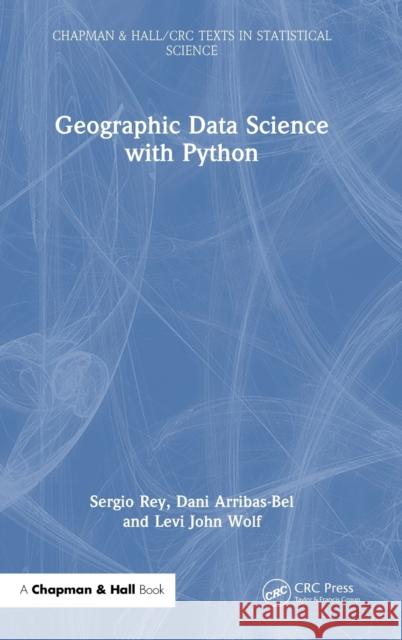Geographic Data Science with Python » książka
Geographic Data Science with Python
ISBN-13: 9780367263119 / Angielski
Geographic Data Science with Python
ISBN-13: 9780367263119 / Angielski
(netto: 625,86 VAT: 5%)
Najniższa cena z 30 dni: 651,77
ok. 22 dni roboczych
Bez gwarancji dostawy przed świętami
Darmowa dostawa!
This book provides the tools, the methods, and the theory to meet the challenges of contemporary data science applied to geographic problems and data. In the new world of pervasive, large, frequent, and rapid data, there are new opportunities to understand and analyze the role of geography in everyday life. Geographic Data Science with Python introduces a new way of thinking about analysis, by using geographical and computational reasoning, it shows the reader how to unlock new insights hidden within data.Key Features:● Showcases the excellent data science environment in Python.● Provides examples for readers to replicate, adapt, extend, and improve.● Covers the crucial knowledge needed by geographic data scientists.It presents concepts in a far more geographic way than competing textbooks, covering spatial data, mapping, and spatial statistics whilst covering concepts, such as clusters and outliers, as geographic concepts.Intended for data scientists, GIScientists, and geographers, the material provided in this book is of interest due to the manner in which it presents geospatial data, methods, tools, and practices in this new field.
This book provides the tools, the methods, and the theory to meet the challenges of contemporary data science applied to geographic problems and data. In the new world of pervasive, large, frequent, and rapid data, there are new opportunities to understand and analyze the role of geography in everyday life. Geographic Data Science with Python introduces a new way of thinking about analysis, by using geographical and computational reasoning, it shows the reader how to unlock new insights hidden within data.
Key Features:
● Showcases the excellent data science environment in Python.
● Provides examples for readers to replicate, adapt, extend, and improve.
● Covers the crucial knowledge needed by geographic data scientists.
It presents concepts in a far more geographic way than competing textbooks, covering spatial data, mapping, and spatial statistics whilst covering concepts, such as clusters and outliers, as geographic concepts.
Intended for data scientists, GIScientists, and geographers, the material provided in this book is of interest due to the manner in which it presents geospatial data, methods, tools, and practices in this new field.











